Charleston... Here We Come!
- Nate and Lori
- Mar 10, 2018
- 8 min read
“When politics is too slow, change has to come from culture”
Al Gore
State 30: South Carolina - February 18, 2018
Disclaimer
Occasionally, our cross country trip requires us to briefly cross over to adjacent states we are not yet scheduled to visit, or have already visited, to see points of interest not included in our path through a specific state. After leaving Florida, we spent 2 days driving through the Southern Georgia coast enroute to South Carolina.
Lori

We woke up at a Walmart in Savannah, Georgia feeling rejuvenated and ready to explore a new state. The first task of the day is an 11 mile drive Northeast to enter the 30th state on our cross country journey to discover America and find a new state to call home; South Carolina: "While I breath; I hope" What a powerful statement striking at the very heart of the South Carolinian society! Hope is one of humanities greatest attributes, and albeit frail, hope is extremely hard to kill. All one has to do is look at the state’s history to understand the motto's meaning. South Carolina was the first state to secede from the Union on December 20, 1860, and the last state readmitted on June 25, 1868. South Carolina rejected the 19th Amendment of 1920 granting women’s suffrage, and the state legislature later consented to a women’s right to vote on July 1, 1969. In 1996, South Carolina legislature unanimously passed a statute defining marriage as between one man and one woman, and on November 20, 2014, South Carolina legalized same sex marriages when a federal court ordered the change. In 1961, the Confederate Flag was erected at the capitol, and on July 10, 2015, the Stars and Bars were permanently removed from the capitol grounds. Change clearly occurs extremely slowly in South Carolina to the point in which the state must be dragged kicking and screaming. At least the state’s residents remain hopeful change will eventually happen. Will South Carolina’s eternal optimism inspire the Cross Country Couple to call the state our new home? We cannot wait to begin our week of exploration in South Carolina!
Our first task of the day was a 90 mile drive Northeast to Summerville, SC to meet with my Cousin Glenn and his partner Michael, who graciously offered to host the Cross Country Couple, and show us around Charleston. They have been following our blog for months and invited us to visit when we found ourselves coming through their area. Well, today was the day! I have only seen Glenn and Michael occasionally over the years at family funerals, and I was looking forward to getting to know them over more cheerful circumstances. After chatting for a while and touring their home, we reciprocated by giving them a Cross County Couple behind the scenes tour of Rosie. Then, we all hopped into Glenn's car, and drove 25 miles Southeast to Charleston. Please see the pictures below.
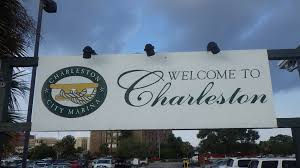
Founded in 1670 and named after King Charles II, Charleston is a city of 134,385 residents known for its rich history, preserved architecture, distinguished restaurants, polite people, and a popular tourist destination. Over the past decade, Charleston and the surrounding suburbs have experienced explosive economic growth due to companies such as BMW, Boeing, Comcast, Frontier, and T-mobile expanding into the area. During our drive into Charleston, we noticed construction occurring on the grandest of scale. Factories, retail, residential homes, and anything and everything in-between was being built wherever we looked! The economic expansion occurring in Charleston was unlike any we had previously seen on our cross country trip! While most communities would be envious, growing too fast has also proven quite troublesome for the city. Thousands have relocated into South Carolina to fill the newly created jobs driving up the price of homes. The result has been forcing unskilled workers to either move out of Charleston or into homelessness. There was another problem we immediately noticed the moment we crossed over the state border. The highways and secondary roads in the state are not able to meet the needs of the areas growing population and are in desperate need of expansion. Two lane interstate highways, and narrow single lane streets with no shoulder makes bumper to bumper traffic and car accidents a daily way of life. We found the social regressiveness of South Carolina's society coupled with out of control economic expansion a real turn off! For the Cross Country Couple, Charleston falls into the purgatory of places we would love to visit, but not a place we would like to live. Nevertheless, Charleston was a cute city with ample charm and character, and we had a lot of fun exploring the city with Glenn and Michael. Please see the pictures below of our leisurely stroll through Charleston.
Nate
Next, we all jumped back into Glenn’s car, and drove across town to the National Park depicted on the reverse of the South Carolina Quarter; Fort Moultrie. When people think of South Carolina and forts, Fort Sumter typically comes to mind, and I commend the state for promoting one of their lesser known historic sites on their state quarter. Fort Moultrie possesses great historic significance as the only place in the US where the entire 171-year history of American seacoast defense can be seen in a single location. Throughout Fort Moultrie’s existence, there were 2 pivotal battles which once occurred here.
Previously known as Fort Sullivan, Fort Moultrie was the site of the Battle of Sullivan Island on June 26, 1776 during the American Revolutionary War. Built to protect the city of Charleston, Fort Moultrie was constructed with logs from the Palmetto Palm due to the trees soft and malleable composition. During the ensuing battle, the British were forced to retreat as they watched their cannon balls literally bounce off the walls of the fort. For the aforementioned reason, South Carolina is known as the Palmetto State, and even the state's flag depicts the trees likeness.

On December 20, 1860, South Carolina seceded from the Union, and on February 8, 1861, South Carolina joined 5 other seceded Southern states to form the Confederate States of America. On April 14,1861, Confederate troops in Fort Moultrie and surrounding coastal Charleston forts shelled the Union controlled Fort Sumter into inevitable surrender. The American Civil War had officially begun. From April 1863 until the end of the Civil War, Union artillery bombarded Fort Moultrie and the other Confederate controlled forts in Charleston Harbor reducing them to a pile of rubble. Union General Sherman marched through South Carolina in February of 1865, and the Confederates abandoned Fort Moultrie.
After the Civil War, The US Army rebuilt Fort Moultrie and modernized it with new weapons and concrete bunkers, but the fort would never again see battle. WW2 produced new military technology such as submarines, fighter planes, missiles, and nuclear weapons forever altering the way war was waged. Coastal shoreline fortifications no longer proved to be an effective strategy to 20th century warfare. On August 15, 1947, the Army decommissioned Fort Moultrie, and the fort was transferred into the care of the National Park System in 1960.
As usual, we first stopped by the visitor center to speak with the Park Ranger to discover how best to explore the park. After getting our National Passport stamped, we watched a very dated movie, which appeared to have been shot some time back in the 1950’s. After departing the visitor center we walked toward the grave site of Revolutionary War General William Moultrie for whom the fort is named for, and proceeded to walk onto a nearby dock overlooking the marshes of Charleston. Please see the pictures below.
We then walked back towards the visitor center, crossed the street, and to begin our exploration of Fort Moultrie. The fort primarily consisted of a seemingly endless series of narrow meandering passageways leading absolutely nowhere. We felt like a rat in a maze, and the experience was quite claustrophobic. Clearly, Fort Moultrie is grossly underfunded, and is in desperate need of updating to make the experience more visitor friendly. Most disappointing, I departed Fort Moultrie having not gained any significant understanding of US history of coastal defense. Please see the pictures below of our visit to Fort Moultrie.
After departing Fort Moultrie, we drove back across Charleston to the Cross Country Couple's Historic Location for South Carolina; Fort Sumter. Constructed on an island in Charleston Harbor in 1829, Fort Sumter is famous as the first battle of the American Civil War. On Friday April 12, 1861 at 4:30 am, Confederates artillery opened fire on Fort Sumter and the American Civil War had begun. The cannon fire continued all day, and into the following night for 34 hours! With resupply lines to Fort Sumter cut off by the Confederacy, Major Robert Anderson lowered the American Flag, and surrendered Fort Sumter to the Confederacy on Saturday, April 13,1861. There were no combat casualties to either the Union or the Confederacy. This is where most history books say the story ends, but there is actually much more to the story!
After Fort Sumter fell to the Confederacy, Major Anderson returned to the North with the American flag he lowered. For the duration of the Civil War, The Fort Sumter flag was taken to various towns throughout the North to raise money for the Union's war effort. At each stop the flag was auctioned off to the highest bidder, flown over the town for one day, donated back to the government, and the process repeated for the duration of Civil War.
Fort Sumter remained under Confederate control until the very end of the Civil War in 1965. Exactly four years to the day when Major Anderson lowered the American flag surrendering Fort Sumter, he returned to the fort’s rubbled ruins on April 14, 1865, and raised the very same flag in celebration of the Union's victory. Ironically, later that very night, John Wilkes Booth assassinated President Lincoln at Ford Theater in Washington DC.

Since Fort Sumter is a sea fort located in the middle of Charleston Harbor, the only way to get there was by ferry, and we regretfully missed the last one by 2 hours. At least we were able to explore the visitor center, which included a chair from a South Carolina secessionist, and a nice observation deck overlooking Charleston Harbor with Fort Sumter in the far off distance. The most exciting artifact on display was the actual Fort Sumter American flag. It was an honor to view the very flag possessing great significance to our nations heritage and history.
After departing the Fort Sumter Visitor Center, we were all starving. Glenn recommended a local café he and Michael often frequented called Five Loaves, and was thoughtful to point out they have vegetarian options on the menu. We all jumped back into Glenn's car, and drove across town to Five Loaves. Upon our arrival, we were seated by a hostess, and provided a menu where I came across the Cross Country Couple's "Famous Food" for South Carolina; Grits. Grits? Seriously? This was my exact response to Lori when she first informed me they were the state's famous food. Grits are not entirely foreign to me as I had occasionally substituted them in for breakfast when I ran out of oatmeal. Although grits does not sound overly exciting, I had yet to experienced how South Carolina does grits!

In South Carolina, grits are an anytime food served with eggs, bacon, fried catfish, salmon, ham and of course with shrimp. Unfortunately, all of the aforementioned are not vegetarian friendly. However, there is a style of grits called “Charleston-style” boiled in milk verses water giving them a creamy consistency, and then mixed with cheese. Fortunately for us, this was exactly the type of grits Five Loaves was serving. Let me tell you these grits were love at first bite!! The consistency was silky smooth, creamy but not overly rich, and all of the flavors and textures blended together in way I can’t even find the words to explain! These grits were one of the most unexpected and delectable culinary experiences of my entire cross country trip. I will remember my meal at Five Loaves for the remainder of my life! Not only was the food fresh and expertly prepared, the service was pleasant and attentive, and the prices were very reasonable considering the quality of food offered. If you ever find yourself anywhere near Charleston, go to Five Loaves Cafe and order their grits (or anything else on their menu). If there is one thing we have learned after 8 months on the road. It is to eat where the locals eat! Thank you Glenn and Michael for an amazing lunch!
After departing Five Loaves Cafe, Glen drove us back to his Summerville home, where we spent the night chatting about family, memories we shared and looking at old pictures of my distant relatives I have never seen before! What a great day!




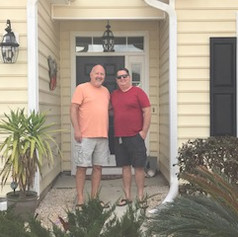











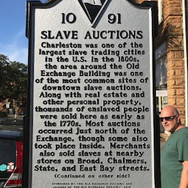































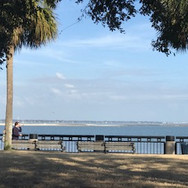







































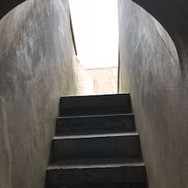





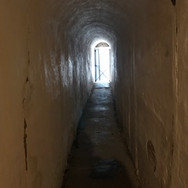



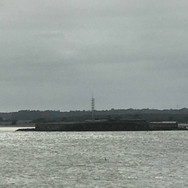





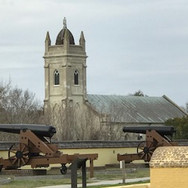



































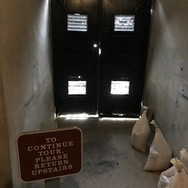

















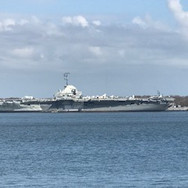


Comments